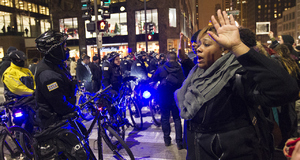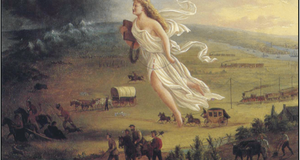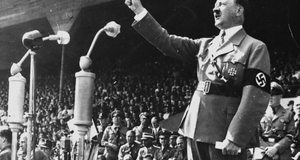Featured Article:Begging for Change: A Comparative Analysis of How the Media Frames Domestic and International Poverty
By
2011, Vol. 3 No. 09 | pg. 1/3 | »
IN THIS ARTICLE
KEYWORDS
AbstractToday, approximately 50% of the world, over three billion people, lives on less than $2.50 U.S. dollars a day. Despite poverty’s wide reaching affects, little research has been conducted that compares the framing of international and domestic poverty in United States media, and applies these comparisons to agenda setting and policymaking. This study will contribute to the current body of literature by conducting a content analysis of one year’s worth of Time articles on both international and domestic poverty. Through both quantitative and qualitative research, this project found dehumanizing affects in the depiction of United States poverty. There was more media coverage of international poverty, a disproportionate representation of poverty within minority groups and a stronger focus on government budget and economics in the articles on domestic poverty. The implications of these findings will be primarily analyzed through the lens of framing theory, impression management and agenda setting theory. IntroductionAs Walter Lippmann once contended in his book Public Opinion, “The only feeling that anyone can have about an event he does not experience is the feeling aroused by his mental image of that event,” (Lippman 1922: 13). This statement can be applied to an innumerable number of facets in our world today, one of these facets being poverty. Poverty is an enduring problem that continues to plague the world today. For the poor, it is a part of their everyday life, affecting their accessibility to life’s necessities such as food, shelter and healthcare. It is a label that influences society’s perceptions. For politicians, it is a consideration they must address in their policy and job. For the public, it is a reality they have come to hold opinions about, which must be taken into account when fulfilling civil duties, such as voting. Many will never experience poverty on a first hand basis, yet most people hold some sort of opinion or image of the matter in their head. These perceptions of poverty are shaped by various values, relationships and social institutions, the media being one of those very influential social institutions. The media plays a large role in shaping public opinion. Understanding how it frames both international and domestic poverty is vital in distinguishing where the foundations of public opinion and policy come from. Currently, there is a large body of research on how poverty is framed within the United States (Gilens; Clawson and Trice; Bullock, Wyche and Williams). Very little however has been published on the framing of international poverty, and even less on comparing the two. The purpose of this research is to identify the similarities and differences in how both domestic and international poverty are framed by Time, the most circulated news magazine in the U.S, and to recognize how this framing may impact public opinion and policy. In doing this, we may be able to better understand one of foundations that helps shape and solidify the public’s perceptions and stereotypes of poverty, and therefore be able to better understand where public policy comes from, and establish some of the aspects of poverty that are being abandoned.Literature ReviewAmerican philosopher and psychologist William James once said, “The prevalent fear of poverty among the educated classes is the worst moral disease from which our civilization suffers.” Currently, almost half the world, over three billion people, live on less than $2.50 US dollars a day (Shah). Recognizing this, it becomes clear that poverty is a pertinent issue effecting people worldwide, yet frequently disregarded due to a lack of understanding and stigmatization. Though poverty does not necessarily affect all people on a personal level, many hold some sort of opinion on the social issue. Opinions are personal beliefs that are the result of synthesis between a variety of different sources including values, personal experience, education and more. The media is an influential social institution that plays a large role in shaping public opinion, and is often viewed as omnipresent (Bullock, Whych, and Williams 2001:229). Society, therefore, can conclude that the media has a multi-faceted, deeply profound effect on poverty. Its portrayal of poverty contributes to the way public views the impoverished, and gives explanation for why they may be poor. These portrayals and explanations of the issue direct the way in which people act towards someone in poverty, as well as steer government policy and shape people’s approval or disapproval of those measures taken by government. Framing theory, a broad communicative theory which is largely influenced by social theorist Erving Goffman, explains that any topic can be viewed from an assortment of perspectives that employ a multitude of different values and considerations. As these topics and issues are presented within a variety of frames, people reshape their thinking about an issue and develop a particular conceptualization of the issue. By choosing some elements of a reality and suppressing others, a story about a social problem is constructed (Chong and Druckman 2007: 104; Bullock, Whych, and Williams 2001: 233). Many issues present in both United States and international societies are complex and time consuming for the average person to learn about and understand. Framing in communications simplifies and organizes these multifaceted problems by endorsing particular explanations and interpretations of the social and political issue (Chong and Druckman 2007: 106). Ultimately, it has a packaging function that requires someone in the media industry to select certain aspects of the larger problem, and make them more palatable for the consumer so that it is easier to understand on a very broad, surface level (Kim, Carvalho, and Davis 2010: 565). The frames that the media choose to use when reporting on and representing a topic are essential because they tell the audience what is important to think about. This can have a deep effect on the attitudes and behavior of the individual by laying out what one should consider when evaluating a variety of issues and applying them to his or her own life (Chong and Druckman 2007: 109-110; Kim, Carvalho, and Davis 2010: 563). The framing of poverty by the media is particularly interesting to examine because questions of both what the cause of poverty is, as well as solutions for the matter, are deeply intertwined, yet often addressed and conveyed individually. This definition and framing of causality and responsibility are very important because they shape the overall approach taken by policy makers when attempting to synthesize a solution for the issue, and when choosing who in particular the efforts towards change within society should be directed towards and applied to (Kim, Carvalho, and Davis 2010: 563). The frames in which issues such as poverty are presented are not selected at random or by chance. Social norms and cultural values serve an important role in determining how a person, or society, aims to portray itself. Goffman argued that through impression management, people deliberately and strategically portray themselves in a manner that creates and manages other’s impressions of them in a desirable way (Johansson 2007: 276). An individual will act in a calculated manner, displaying himself in such a way with the purpose of exuding an impression that he aims to obtain (Goffman1959: 6). By successfully mandating another’s impression of one self, an individual or society is able to control their status amongst others, even if the impression is falsified or skewed (Goffman 1959: 8). The impression a person chooses to convey allows them to control their status in society; or if this impression management is carried about by a large social institution such as the media, they attempt to control their status within the global arena. The media’s use of impression management directs the way an issue is framed. In the United States, a strong sense of individualism is deeply engrained within American society. This steers a person’s opinion on issues that may be explained as a matter of individual fault. Consequently many blame social problems, such as poverty, on the shortcomings of an individual rather than on larger social factors (Kim, Carvalho, and Davis 2010: 563). By sticking to frames that fit the cultural values and norms of individualism, the media aims to present the issue in a manner that is easily recognizable and understood by the general public, rather than in a way that is more accurate and representative. Living in a capitalist society, it is believed that United States media builds frames based off organizational pressures and constraints in place to accumulate more profit. Attracting larger audiences translates into larger profit margins for media organizations. Recognizing the need to attract readers and increase profit, the media will present stories or issues in dramatic ways that call on the use of a particular frame (Kim, Carvalho, and Davis 2010: 563). Since poverty is largely classified as a social problem, it is inherently political in nature. Therefore, the way its root cause is framed, paired with whom the media frames as responsible for treating the problem, is critically important in determining the direction policy may take (Kim, Carvalho, and Davis 2010: 563). Often times, small factors in the way an issue is presented or framed can cause drastic changes in public opinion and policy (Chong and Druckman 2007: 104). In news media, framing is usually described with a negative connotation because of its strong power to manipulate public preferences to serve the interests of elite social groups. This leads to the stereotyping and devaluation of those less powerful groups, such as the underclass and racial and ethnic minorities, by the media (Chong and Druckman 2007: 120; Bullock, Wyche, and Williams 2001: 230). Framing is often criticized for simplifying important and complex social issues into small problems that are the responsibility of the individual, rather than the result of a flaw in the larger structure. This may be explained by the strong emphasis of the ‘American Dream’ in United States culture as mentioned earlier, or the belief that the critique of society as a whole is too politically and economically extreme (Kim, Carvalho, and Davis 2010: 566). As a whole, the implications and presence of poverty across the globe are largely ignored within media content. It is argued that what little coverage the issue does obtain is episodic and thematic which lacks the element of humanization that attracts the attention and sympathy from the media consumers. The media fails to reflect the realities of poverty in a way that calls readers to action in order to find solutions to the issue (Bullock, Whyche, and Williams 2001: 232; Bunton 2006: 362). Different research studies and literature defined a variety of diverse frames used by the media when discussing poverty. As a whole, they were either categorized as personal or society level causes and many conveyed stereotypical assumptions about those individuals in poverty. As well, people living in poverty were described as partaking in behaviors that may harm the well-being of the community, such as criminal activities, alcohol/drug use and gang activity (Bullock, Whyche, and Williams 2001: 233; Kim, Carvalho, and Davis 2010: 268; Clawson and Tryce, 2000: 54). Paired with these descriptions of the underclass, many of the solutions for helping the poor given by the media, such as increasing taxes public spending, provoked resentment and animosity from those not personally affected by poverty because it draws upon their resources (Bullock, Whyche, and Williams 2001: 233). One group that was severely over-represented in media depictions of poverty within the United States, and more frequently associated with negative stereotypes, was the black population. A media consumer would likely hold the impression that the poor in America are mostly black (Gilens 1996: 521). While blacks make up less than one third of the poor in the United States, national surveys report that the public substantially overestimates the percentage of blacks among the poor at around fifty to sixty percent. Media images of a strong relationship existing between poverty and race/ethnicity is to blame for leading the general public towards these basic assumptions about those in poverty. This exaggerated correlation between race and poverty perpetuates negative racial stereotypes and increases white Americans disapproval of welfare as a solution to poverty (Gilens,1996: 516-517; Clawson and Tryce 2000: 54; Bullock, Whych, and Williams 2001: 236). Another demographic that is misrepresented in media’s portrayal of poverty was age. Though children make up a disproportionately large percentage of those in poverty, this proportion was exaggerated by magazines. While children typically receive sympathy for their poverty, the children depicted were largely black children. Their race may undermine the sympathy they would typically receive for being children (Clawson and Tryce 2000: 59). The other extreme on the spectrum of age, the elderly, which is a group that is typically received with sympathy, was nearly invisible and severely under represented by the media (Clawson and Tryce 2000: 59; Gilens 1996: 522). Another misrepresented demographic was a person’s residence. Most poor people, 77%, live in urban areas as compared to rural or suburban areas. However, the media depicted 96% of the poor as living in urban settings by the media. Negative stereotypes about high levels of criminal activity in urban settings, paired with this depiction of urban poverty, promote a negative image of those in poor (Clawson and Trice 2000: 59-60). Finally, the media predominantly shows a non-working, and therefore lazy, poor. Realistically, approximately 51% of the poor in the United States hold either full or part time jobs (Gilens 1996: 524). In the media however, only 30% of the working age poor were shown working or completing some type of job training. Of that 30% shown working, most were white (Clawson and Trice 2000: 59-60). These depictions promote disapproval of welfare systems because it largely categorizes the poor as lazy. 57% of the population believes that the poor would rather accept welfare or other forms of government assistance than work for their living (Gilens 1996: 523). The ramifications for these misrepresentations go beyond inaccurate perceptions held by individuals. Agenda setting theory explains that the media not only has the power to frame what the public thinks about an issue, but also determines which issues are important to the public. Agenda setting research is founded on the knowledge that though many disagreeable conditions and issues are present within society, there is only room for a few in the agendas of the media and policy makers (Best 2010: 75). The extent to which the media covers an issue determines whether the public views the reality as something that concerns them or not (McCombs and Shaw 1972: 180).The way the media portrays poverty shapes overall public opinion (Clawson and Trice 2000: 61). Political leaders shape their campaigns and platforms on what they have determined to be the primary concerns of the public. The political agenda, which is the collective attention of elected national policy makers, ultimately shapes public policy. Out of fear of not getting re-elected, these agendas will never be built in ways that may cost the political elite electorally (Mortensen 2010: 357). Because the public’s opinion of poverty are shaped by stereotypical and inaccurate portrayals, public policy may not sufficiently address the true, underlying problems of poverty (Clawson and Trice 2000: 61). Despite all of the research done on the ways that the media depicts the poor within the United States, little has been done to analyze how international poverty is portrayed by the media. Following this, no comparisons have been made between the depictions of United States poverty and global poverty. As a global superpower, the United States funnels large sums of money into global aid and assistance. The time and money devoted to international poverty is determined by political agendas and policy, which we have found are determined by the way the media frames poverty. Acknowledging the important role that the media has in framing public opinion and shaping the political agenda and policy domestically, it is equally important to analyze how global poverty is portrayed as well. Only then can we synthesize how both portrayals play a role in policy on poverty as a whole. MethodsThe data for this study was drawn from every online Time magazine article pertaining to poverty in the ‘Nation’ and ‘World’ subsections between January 2010 and January 2011. In most recent studies, Time was identified as the United States news magazine with the largest circulation within the U.S. at 3,374,366 (http://nyjobsource.com/ magazines.html). As well, studies in the field of communications show that the Internet has become one of the most popular vehicles for media consumption, displacing much traditional media, including broadcast and newspapers (Dimmick, Chen and Li 2004: 19, 26). Recognizing this, it is fair to say that online Time articles would be the most highly trafficked magazine articles on the topic, and therefore the most relevant to the study. After entering the word ‘poverty’ into the search bar, and narrowing down the search to ‘Nation’ and ‘World’ articles that fell into the time frame of January 2010 to January 2011, 183 related articles were identified. I then read and analyzed these 183 articles, removing the non-applicable articles that simply mentioned the word poverty as a part of a list, briefly stated it with no context, or gave a fleeting statistic about it with no real applicability in regards to the country or region the article was about. After doing this, the initial 183 articles were pared down to 78, which were then analyzed and coded in depth. In analyzing these 78 articles, a mixed method approach was taken, recording both quantitative characteristics that could be analyzed statistically, as well as utilizing a qualitative, open coding approach to later explore patterns that could not be simplified into clean, quantitative data sets. The articles were analyzed within three subcategories including image, caption and content. These three categories of data collection were consistent with similar studies done previously by other researchers on related topics. First, the image accompanying the article was coded within a variety of simple demographic variables, including the setting, whether people were present, number of people, race, age bracket (<18, 18-64, >64), gender, class and type of person (impoverished, politician, helper/aid or other). As well, images were openly coded; taking more detailed notes on things such as what emotion was being conveyed by the image and what was occurring. Majority of the articles (76 articles, 99%) were accompanied by an image. Of these articles, I looked at whether a caption was present. In 86%, 65 articles (Table 10) a caption was included with the image. This caption was analyzed to decide whether a spin was being put on the caption, and if it was, whether this spin was positive or negative. These perceived positive and negative spins were identified through key adjectives and adverbs that convey particular emotions. Lastly, the final step in collecting the research was to code the content of the article. Following a quantitative approach, the articles were coded following a set of questions about whether the article was about international or domestic poverty, the region, whether poverty was the main focus of the article, whether an explicit cause for the poverty was given, whether a solution was suggested to help eradicate or lessen poverty and whether the article was more focused on a grander governmental budget or economic problem rather than on the actual people being affected. Paired with this quantitative collection, qualitative data was recorded with open coding on what the main focus of the article was, what particular cause for poverty was given, if one was given at all, and what place poverty had within the context of the article and how it was related. All but one (age) of the quantitative variables collected for this study were nominal. In order for the statistical program SPSS to appropriately understand the nominal variables, I needed to clean up and regroup these variables into as few values as possible. To start this process of recoding and cleaning up the data, I ran frequency tables on all of the original quantitative variables. In doing this, I was able to see where I had used different words for the same thing, and renamed them accordingly. As well, I was able to identify values that, in comparison to the others, were too small to be considered statistically significant. I either regrouped these values into an ‘Other’ category with other relevant, small values, or threw out the value entirely, declaring it as missing. After cleaning up my data sets, I was able to analyze the data through the appropriate use of frequency tables, cross tabulations, layered cross tabulations, and chi-square tests. These final tables will be referenced throughout the course of the paper and can be found in the appendix.Continued on Next Page » Suggested Reading from Inquiries Journal
Inquiries Journal provides undergraduate and graduate students around the world a platform for the wide dissemination of academic work over a range of core disciplines. Representing the work of students from hundreds of institutions around the globe, Inquiries Journal's large database of academic articles is completely free. Learn more | Blog | Submit Latest in Sociology |


















